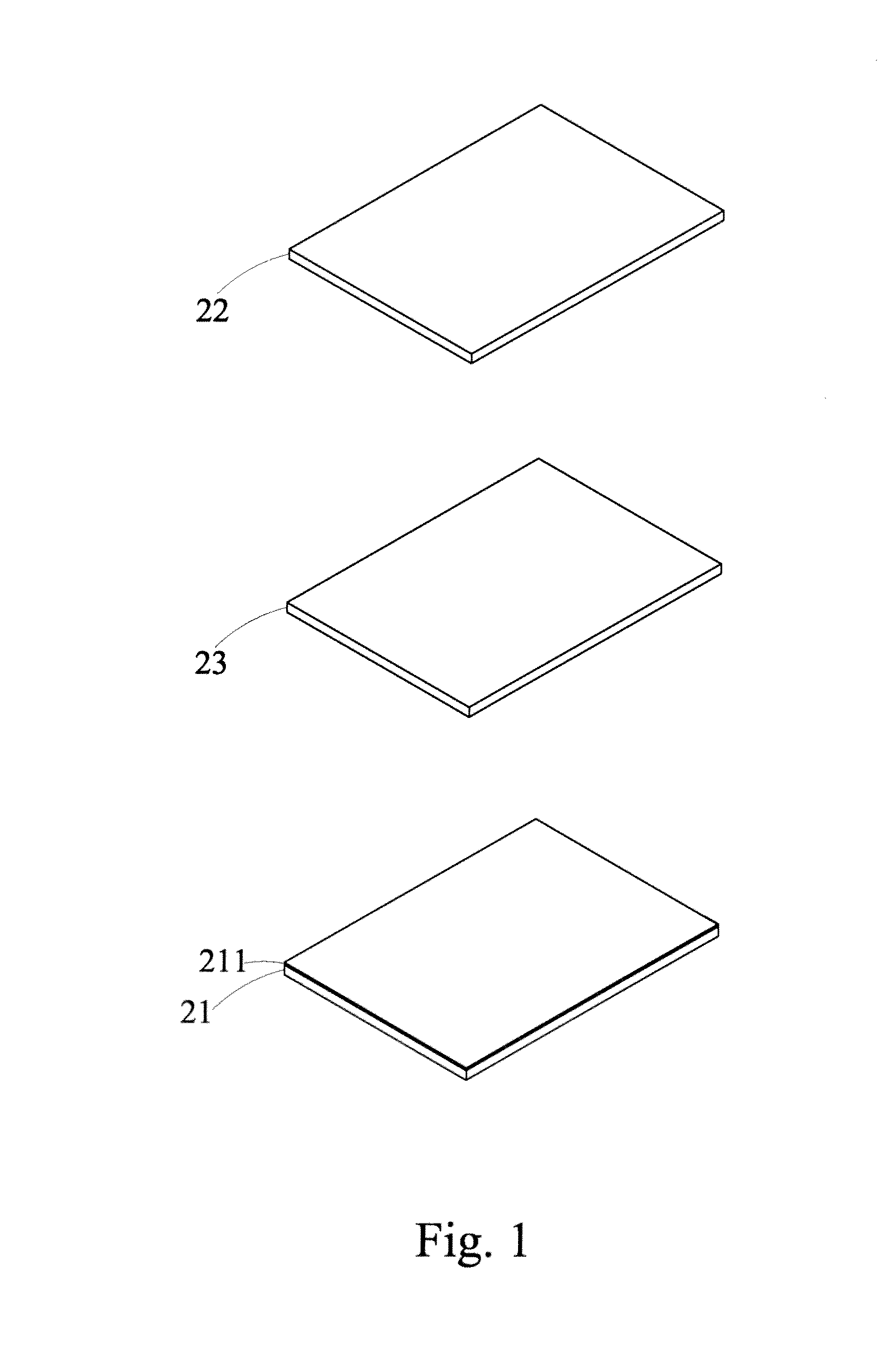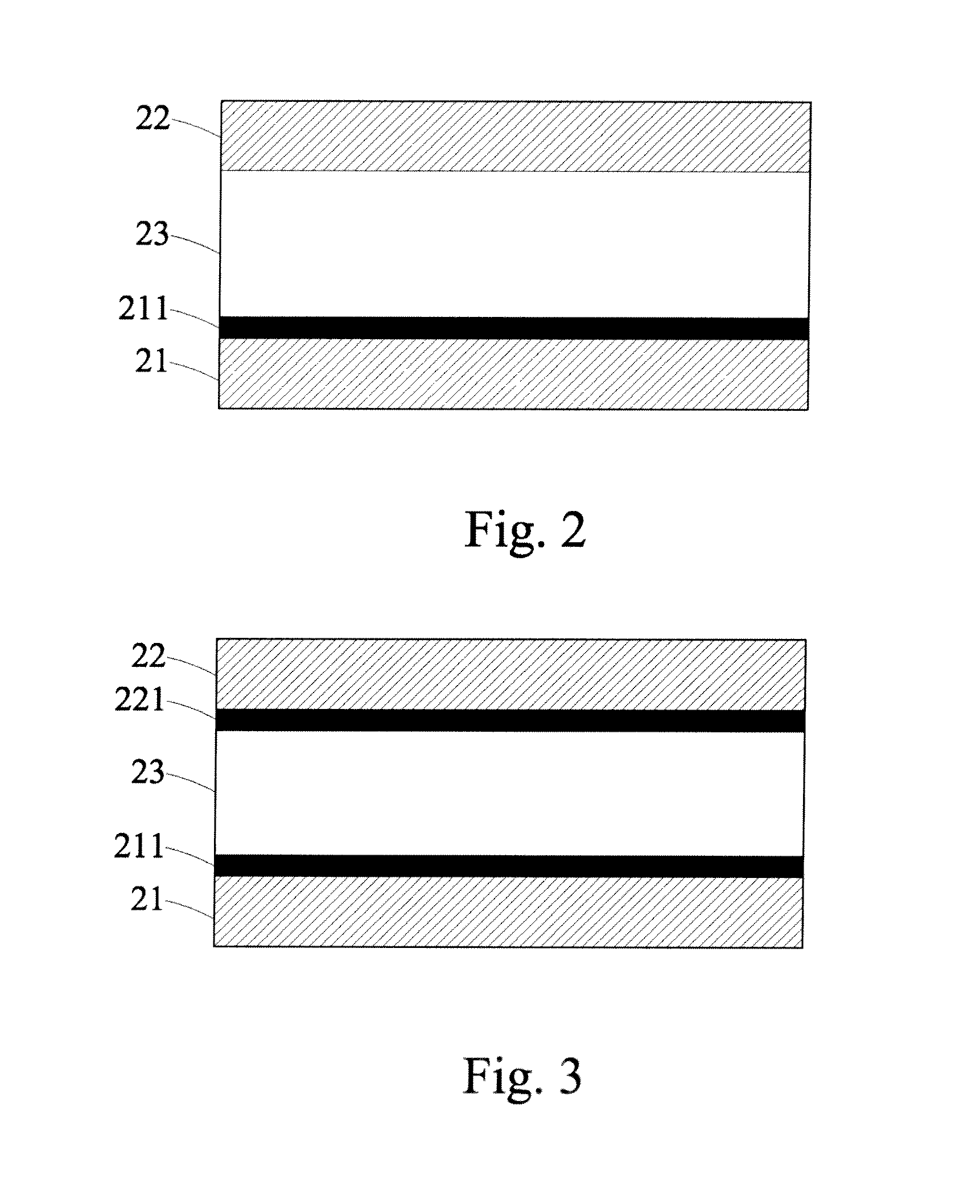Electrochromic unit and display device using the same
a technology applied in the field of electrochromic units and display devices, can solve the problems of not being able to switch to display 2d images, environmental protection and toxicity, and the manufacturing process is very complicated
- Summary
- Abstract
- Description
- Claims
- Application Information
AI Technical Summary
Benefits of technology
Problems solved by technology
Method used
Image
Examples
Embodiment Construction
[0043]The technical characteristics and effects of the present invention will be apparent with the detailed description of preferred embodiment together with the illustration of related drawings as follows.
[0044]With reference to FIGS. 1 to 3 for an exploded view of an electrochromic unit 2 a first schematic view of a transparent conductive element and a second schematic view of a transparent conductive element in accordance with a first preferred embodiment of the present invention respectively, the electrochromic unit 2 comprises a first transparent substrate 21, a second transparent substrate 22, an electrochromic layer 23 formed between the first and the second transparent substrates 21, 22, and a first transparent conductive element 211, wherein the first transparent conductive element 211 can be installed on a surface of the first transparent substrate 21 (as shown in FIG. 1) or on a surface of the second transparent substrate 22 (as shown in FIG. 2), or the transparent conduc...
PUM
 Login to View More
Login to View More Abstract
Description
Claims
Application Information
 Login to View More
Login to View More - R&D
- Intellectual Property
- Life Sciences
- Materials
- Tech Scout
- Unparalleled Data Quality
- Higher Quality Content
- 60% Fewer Hallucinations
Browse by: Latest US Patents, China's latest patents, Technical Efficacy Thesaurus, Application Domain, Technology Topic, Popular Technical Reports.
© 2025 PatSnap. All rights reserved.Legal|Privacy policy|Modern Slavery Act Transparency Statement|Sitemap|About US| Contact US: help@patsnap.com



